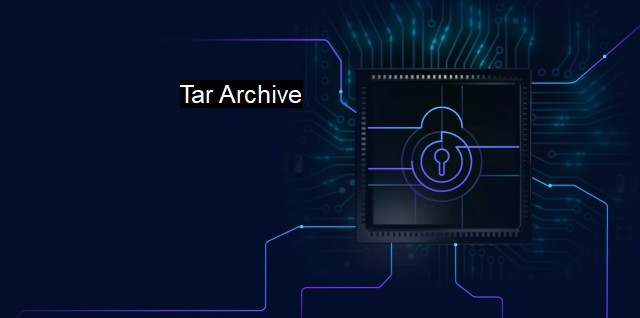What is Tar Archive?
The Significance of Tar Archive in Cybersecurity and Antivirus: Understanding Its Benefits for Remote File Transfer and Data Protection
The "Tar Archive" or "Tape Archive" or simply "tar" file is a well-established format in Unix-like systems, extensively used for gathering many files into one larger file in a continual stream for storage or transmission. Despite its name, the Tar Archive's application is not restricted to tapes, and files can be archived in tar format on any storage medium. A tar file isn't necessarily associated with any specific file extension. it's standard practice to see .tar files, and sometimes when files are compressed, they bear the .tar.gz, .tgz, .tar.bz2, .tbz, .tar.xz, or .txz extensions.In cybersecurity context, the ability to pack multiple files into one is significant as it presents possible impacts in various scenarios. Tar files can end up being vulnerabilities if they are mishandled or if they hide malicious content within them. Cybercriminals are known to use tar files to propagate malware or unlawful intrusion into sensitive systems.
Depending on the disk permissions of the user, tar files can read, write and execute commands within multiple systems making them vulnerable. Archived, compressed files, therefore, remain one of many means used by malicious actors to supply and spread malware across systems due to their ability to bundle multiple files together into a single entity that may not be readily recognisable as malicious.
With the more frequent communication between dissimilar systems and the soaring surge of data that needs to be transferred, packed files can sometimes make it formally tricky to ascertain their contents, thus strengthening the malware distribution effectiveness via the Internet. Users may unknowingly open a Tar Archive file without being aware of its content, falling victim to a trap intentionally set by a malicious actor. Hence, there is a definite need to establish appropriate security measures when dealing with tar files due to the potential risks they pose.
Antivirus software is one of the critical countermeasures to this alarming threat. It can perform an essential role in defending against malware concealed in tar files by scanning them for potential threats. It checks tar files and their contents against known pieces of malware to ensure that no known threat can use them as a propagation vehicle. Some antivirus software even allows for inspecting tar files before opening them, thus potentially inhibiting malware before it infiltrates the system.
Advanced antivirus programs also have the added benefit of being capable of detecting 'signature-less' malware: threats that do not match known malware signatures but display malicious behavior. This type of antivirus software monitors tar files, looking for suspect activities, and dissect the contents of each file, ensuring that the collected array of files does not contain malicious or dangerous data. They inherently understand how to parse the tar stream, gain access to its files, and inspect all contained files, regardless of whether they are executables, source-code or text files ensuring robust protection from anything harmful that might lurk inside tar files.
Some antivirus tools include heuristic, machine learning techniques, and sandboxing features, enabling them to recognize threats that are not in their database - unknown malware that tends to hide in tar files, examining their behavior in an isolated environment to the respective device, application, or network secure from the hazardous effects.
Educating users about the possible risks linked with unpacking unfamiliar tar files presents an essential step in security. Users should also be made aware of encryption tools that can ensure the safety of their files and protect them from malware that may infiltrate archived, compressed data files.
While tar files are useful resources in managing and storing multiple files in one easier-to-handle bundle, they also present potentially serious vulnerabilities in the face of increasing cyber threats— striking a balance between utility and safety when it comes to tar files manifest an essential task in modern cybersecurity. Thus, cybersecurity systems need advanced and regularly updated antivirus software and a thorough understanding of how tar files function.

Tar Archive FAQs
What is a tar archive and how does it relate to cybersecurity?
A tar archive is a file that contains multiple files, folders, or directories compressed into a single file. In cybersecurity, tar archives are often used to package and transfer large amounts of data securely.Can tar archives be scanned by antivirus software?
Yes, antivirus software can scan tar archives for malicious content. However, the scanning process may take longer for larger archives.How can I create a tar archive that is encrypted for added security?
You can use a tool like GnuPG to encrypt your tar archive with a password. This will ensure that only authorized parties can access the files contained within the archive.Is it safe to extract a tar archive from an unknown source?
It is not recommended to extract a tar archive from an unknown source as it may contain malicious content. It is best to only extract archives from trustworthy sources or after scanning the archive with antivirus software.| | A | | | B | | | C | | | D | | | E | | | F | | | G | | | H | | | I | | | J | | | K | | | L | | | M | |
| | N | | | O | | | P | | | Q | | | R | | | S | | | T | | | U | | | V | | | W | | | X | | | Y | | | Z | |
| | 1 | | | 2 | | | 3 | | | 4 | | | 7 | | | 8 | | |||||||